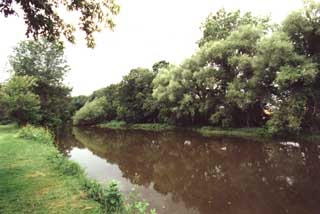
April 29 Anyone interested in protecting and enhancing Black Creek and its environs is welcome to attend the April 29 meeting of the Black Creek Watershed Coalition, where the group will present the first draft of its "state of the basin report." "The public is welcome, the more input we have the better," said coalition member Dorothy Borgus. The meeting will take place 7 p.m. Tuesday, April 29, at the State University College at Brockport in room 306 of the Lennon Science Complex. Opinions and information from the public will assist the group as it prepares to submit its final draft of the report, June 27. The group has been meeting for more than a year, since being awarded an Environmental Protection Agency grant to study the watershed, and prepare a report. The Monroe County Department of Planning and Development applied for the grant along with more than 200 other municipalities and only 12 were awarded, according to Borgus. Fourteen municipalities in four counties are represented in this coalition, from Black Creek's beginning as a stream in Middlebury, Wyoming County, to where it enters the Genesee River in Chili, Monroe County. In between are Clarendon, Bethany, Batavia, Stafford, Elba, Byron, LeRoy, Bergen, Riga, Ogden, Wheatland and Sweden. The "Black Creek Watershed" includes all the land and tributaries that run into and form Black Creek -- everything that finds its way into the creek, from water run-off from fields and ditches to small streams throughout the area. "The state of the basin report is basically a summation of what is present in Black Creek," said Borgus. "We are identifying problems in the watershed, resources that should be preserved, and persons, agencies and organizations that should be involved in the preparation of a watershed plan." The coalition used some grant money to hire three consultants from SUNY Brockport to help gather, interpret and map data. The report includes unique features of the Black Creek Watershed and geographical settings, including topography, geology, vegetation, wildlife, land uses, water quality and hydrology. "We are paying particular attention to water quality and quantity, and current problems and threats, relative to land use," Borgus said. "The idea is, that we hope to get more grant money to then look at solutions for some of the problems we have identified ... and to develop some of the potential of Black Creek," she said, such as recreational opportunities like fishing and swimming. "We have done a fantastic job, and our consultants have, so we hope we just shine among the other grant recipients," said Borgus. "We hope we just stand head and shoulders above the rest, so we can get some grant money to really make a positive impact on Black Creek." The coalition is made up of people from all four counties: members of municipal planning and conservation boards, concerned landowners and just interested citizens. It is open to anyone. "We have an amazingly wide variety of people," Borgus said, including those with an environmental science background and those who simply enjoy Black Creek and are concerned about protecting it for the future. "We would love to have a big crowd," at Tuesday's meeting Borgus said, and said it is not too late to get involved. In fact, she said, it may be better to get involved now, while the group is more focused, adding, "It was so hard to get our arms around at the beginning, it was so wide open. This is a great opportunity for those people who were in it in the beginning and didn't see it through, to be a part of it again," she said. Anyone who would like to review the draft prior to the public meeting, can visit the Black Creek Watershed Coalition's website at www.blackcreekwatershed.org. "It's a snapshot, as of 2003," Borgus said. The group will meet at least once more in May, before presenting the final draft to River Network, in Portland, Oregon, the organization overseeing the grant. "We would love some public input," she said. "There are no solutions in this report," Borgus said. However, this report will serve as a benchmark for this group, and others like it. "Knowing how our past and current lifestyles have affected Black Creek will help conservationists today and tomorrow formulate a plan to cohabit the watershed in a way that is mutually beneficial. We may learn how to maximize what we get out of Black Creek, while minimizing what we're putting in." |
